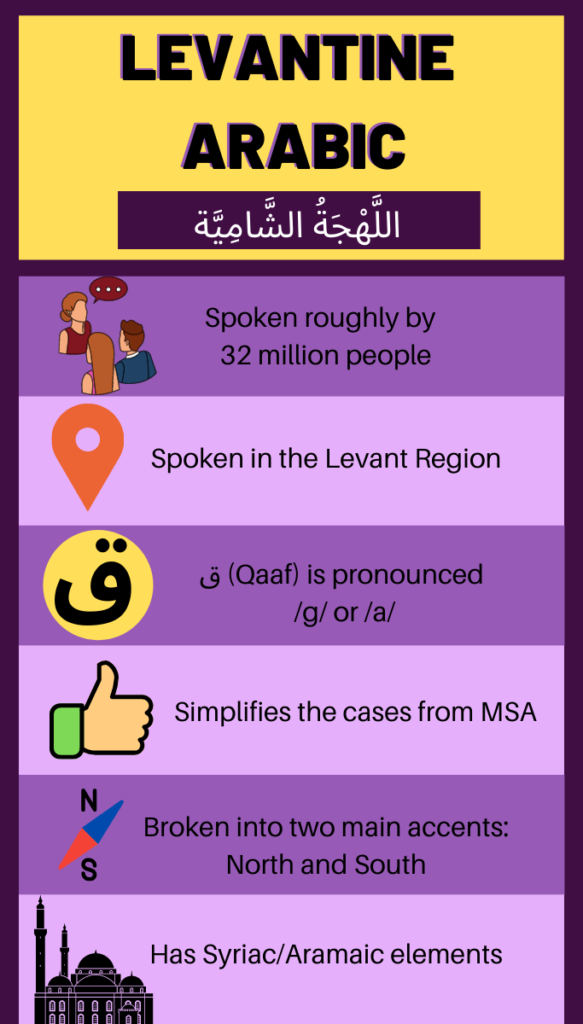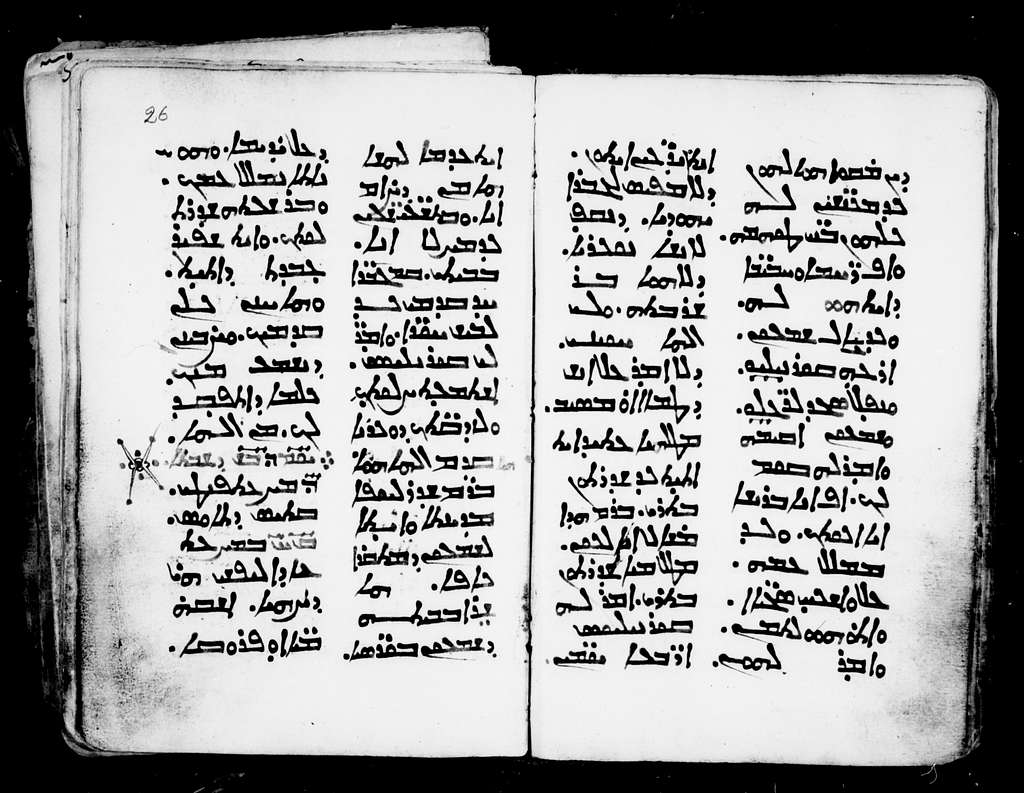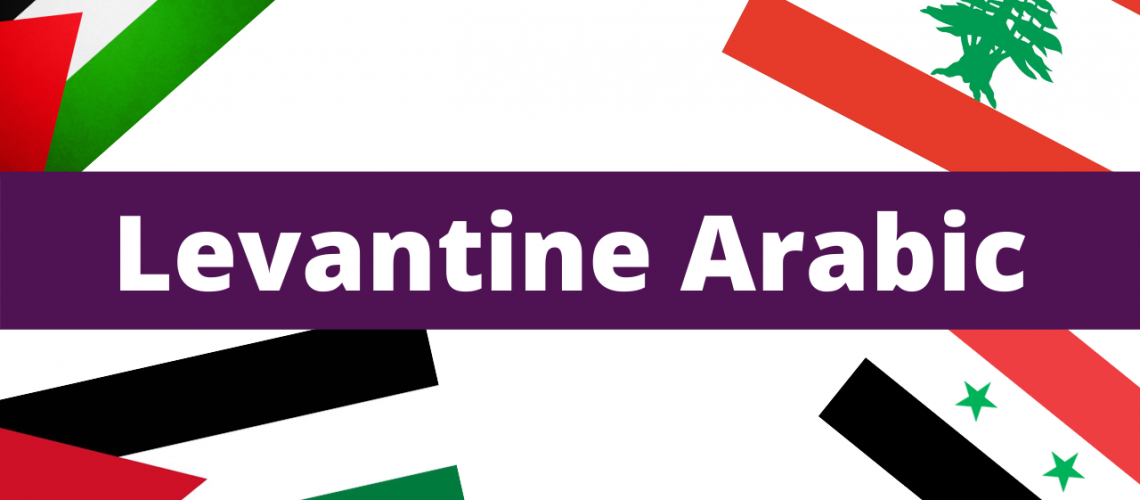A Quick Overview of Levantine Arabic
Levantine Arabic, or Eastern Arabic, is an Afro-Asiatic -> Semitic -> Central Semitic -> Arabic dialect, spoken in the Levant region by approximately 30 million people, according to Ethnologue. This includes Jordan, Palestine, Syria, and Lebanon. Speakers can be found in other areas across the Levant as well, such as eastern Turkey, Iraq, and Israel.
The dialect’s discovery (in a linguistic sense) can be traced to the Compendio of Lucas Caballero which was a compilation of information which included the Arabic being spoken in Damascus. In it, the author describes the usage of different grammar from Damascus Arabic to the Classical form.
A Little Bit About the Levant
The word “levant” comes from French, which means “rising” and was used to describe where the sun rises. This referred to the eastern part of the Mediterranean such as Egypt, Jordan, Palestine, Israel, Turkey, Iraq, Lebanon, Syria, and other parts of Asia Minor.
After World War I Syria and Lebanon were given the name “Levant States” by the French and to this day people will sometimes refer to those two countries as the Levant States.
Levantine and Mesopotamian Arabic
Throughout the Levant region, there are two dominant Arabic dialects: Levantine Arabic, and Mesopotamian Arabic. Mesopotamian Arabic is commonly spoken in Iraq and Syria.
In terms of popularity, both have between 20-30 million speakers and are widely understood across the Levant.

Where Did Levantine Arabic Come From?
So this is a question that required a lot of digging and as from what we know, Levantine Arabic is a mix of Classical Arabic (spoken during the time of the first caliphate) and Syriac, or Middle Aramaic.
Syriac / Middle Aramaic
Prior to the Siege of Damascus (634 A.D.) and the Muslim Conquest in general, the language spoken throughout the levant was Syriac. Syriac, or Middle Aramaic, which is a child of the Semitic languages.

Syriac is a variety of Aramaic and has certainly shown strong similarities with Arabic. The Aramaic and Syriac writing system has been described as an early form of Arabic.
Switching to and Morphing with Arabic
Once the Muslims conquered the northern parts of the Levant (around the 7th century A.D.), many speakers began to adopt Arabic, and naturally, they added components of Syriac into their day-to-day language use. It’s believed that the phonology of Levantine Arabic reflects that of Aramaic / Syriac. Because Syriac was quite similar to Arabic in general, the switch may have been quite easy from a linguistic standpoint.
Levantine Arabic vs Modern Standard Arabic
Like with most Arabic dialects, the complications brought about by Modern Standard Arabic grammar and phonology, and syntax, has been simplified.
According to Leslie J. McLoughlin (author of Colloquial Levantine Arabic) cases are pretty much omitted and verb suffixes are far fewer than in MSA.
You’ll also notice a difference in the demonstratives for instance look at the table below:
| English | Levantine Arabic | Modern Standard Arabic |
| That (masc. sing) | Haydaak | Dhaalika |
| That (fem. sing.) | Haydeek | Tilka |
| This (masc. sing.) | Haydaa | Haadha |
| This (fem. sing.) | Haydee | Haadhihi |
| These (masc. dual) | Hadhaani | Haydool |
| These (fem. dual) | Haataani | Haydool |
You will also notice a few differences between MSA and Levantine Arabic in day-to-day phrases and word choice. For instance, the phrase ‘ayna ‘ant? which means “where are you (masc. sing.) would be waainak?
The word “ayna” means where in MSA, but is changed to “ween” in Eastern Arabic.
When it comes to morphology, the “Qaaf” (ق) which is pronounced with a heavy Q sound, will be “A” or “G” For instance the word “Qalam (قَلَمْ / Pen) would be pronounced “Galam” or “Alam”
Levantine Arabic Phrases
Take a look at the following phrases that are commonly used in Levantine Arabic vs. those used in Standard Arabic. You’ll notice some differences but also a lot of strong similarities, remember that Eastern Arabic is simply a dialect of MSA so the differences aren’t major.
| English | MSA | Levantine Arabic |
| Hello (casual) | Marhaban | Marhaba |
| What is your name? M What is your name? F | Maa ismak? Maa ismik? | Shoo ismak? Sho ismek? |
| Where are you from? M Where are you from? F | Min ayn anta? Min ayn anti? | Min wayn? (used for both M & F) |
| I’m from | Ana min | Ana min |
| Sorry | Aasif | Mit assif (m) Mit assifa (f) |
| Do you speak Arabic? | Hal tatakallam al-‘arabeeyah? | Bekhee Arabee? |
| I speak a little Arabic | ‘Atakalam qaleelan al-arabeeyah | Ana bekhee Arabee shwaya |
| Good evening | Masaa al-kahyr | Masa’ el-khayr |
| Good morning | Sabaahul kahyr | Sabah el-kahyr |
How to Learn Levantine Arabic
If you’re looking to learn Levantine Arabic you want to first consider, why? What is the purpose for learning this Arabic variant? Yes, it’s a commonly asked question but also one that is entirely overlooked for new language learners.
Are you learning Levantine Arabic to impress your partner? Are you learning it to speak with family? Are you learning it for work? The reason this is important when it comes to Arabic especially, is because if you learn Levantine Arabic you may be disappointed that your intended audience speaks a different variant. People from Morocco may not understand you immediately, especially if you’re just starting out and your pronunciation and accent isn’t great. However, this shouldn’t discourage you.
Levantine Arabic is a widely spoken dialect throughout the Arab world, and many films and songs are produced in this dialect so many of the words and trivial vocabulary have been adopted by various Arabic speakers. This is one of the beauties of the internet age 🙂
The Differences in Accents
When choosing a textbook or course also keep in mind that there are many textbooks that say “Levantine Arabic” but are actually teaching a specific accent such as Lebanese, or Palestinian, or they might teach the dialect as a whole and substitute differences among all three with Standard Arabic.
If you’re looking to learn Levantine Arabic you can check out some free resources listed below!
Free Resources
- Podcast in Levantine Arabic: https://soundcloud.com/talkinarabic/sets/levantine-dialect
- FSI Levantine Arabic: https://www.fsi-language-courses.net/fsi-levantine-arabic-course/
- Memrise Levantine Arabic Courses: https://www.memrise.com/courses/english/levantine-arabic/
- Learn Levantine Arabic by KOJII Languages
Paid Resources
- Colloquial Arabic on Amazon: https://tinyurl.com/ydg9ypma
- Levantine Arabic (Shwayy ‘An Haali Series): https://tinyurl.com/y7uj27dz
- Pimsluer Eastern Arabic: https://www.pimsleur.com/learn-arabic-eastern/pimsleur-arabic-(eastern)-levels-1-3/9781442307308
Yemeni Arabic
If you’re interested in learning about another dialect of Arabic you can check out our blog post on “Yemeni Arabic” which goes over its usage, and interesting aspects of the language.
References
- https://tinyurl.com/yb4cnrc7
- https://tinyurl.com/y8vj3apx
- https://tinyurl.com/y7488xod
- https://tinyurl.com/ydx7owqq
- https://tinyurl.com/yabm7nup
